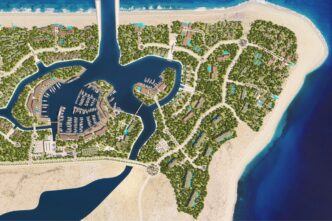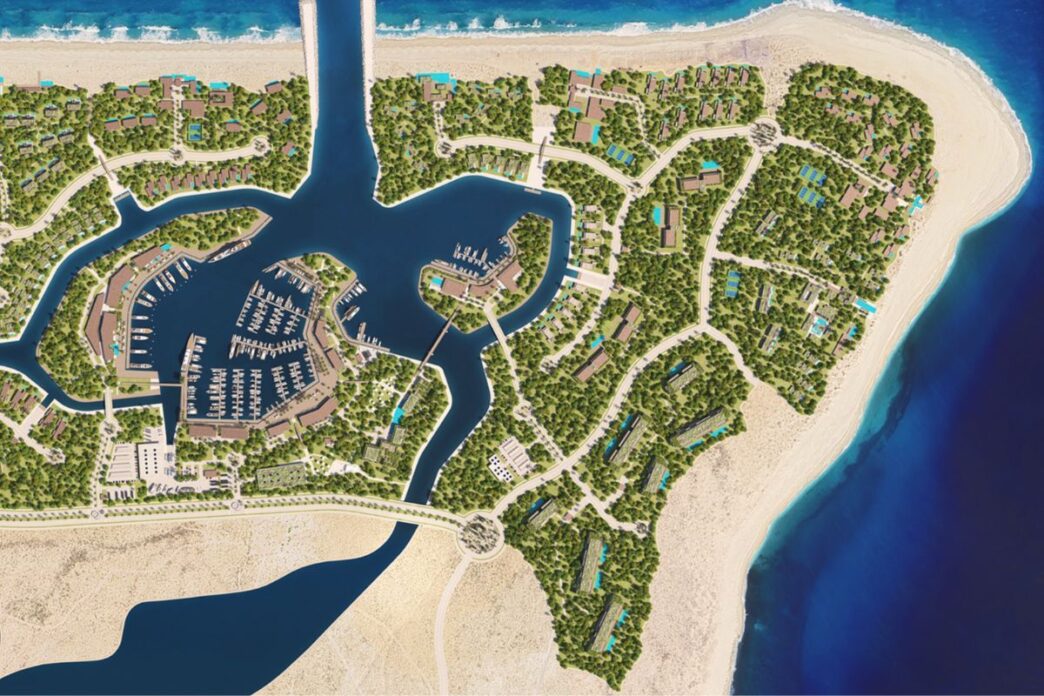Fishermen from Agua Amarga and NGOs are opposing a real estate megaproject planned for Punta Arena Beach, Baja California Sur. Though authorized by SEMARNAT in 2016, ORGCAS argues that its permit should be revoked due to the project’s threat to biodiversity and the communities that depend on the area’s natural resources.
ORGCAS, a nonprofit founded by six women, marine biologists, lawyers, researchers, and educators, collaborates with coastal communities in Baja California Sur to protect marine ecosystems while supporting local livelihoods.
The “Peninsula of Dreams” development is located 50 kilometers from La Paz. It poses a serious risk to Punta Arena’s biodiversity and threatens the fishing and tourism activities that sustain Agua Amarga’s 600 residents. Though not directly on the shoreline, the community has long depended on the ocean’s rich resources.
A decade ago, fishermen docked their boats freely on Punta Arena Beach. But developers from Peninsula de los Sueños S.A. de C.V. fenced off the land, leaving only two access points. Security was increased, control posts installed, and “private property” signs warned of 24-hour satellite surveillance.
Fishermen fear the project will destroy both biodiversity and their ability to fish and host tourists, activities that highlight the area’s natural beauty.
The proposed complex includes 7,000 residences, 7,000 hotel rooms, recreational facilities (including soccer fields, golf courses, and an inland lake), commercial zones, an airstrip, beach clubs, schools, parks, worker housing, three desalination plants, a wastewater treatment plant, roads, and electrical systems, all on 3,519 hectares (8,700 acres).
Fishermen and ORGCAS are especially concerned about the marina and desalination plants. The site lies opposite the channel between Punta Arena and Cerralvo Island, an area with strong currents that attract diverse marine species. ORGCAS research over four years confirms the area’s global importance for marine mammals.
Species recorded there include blue, gray, humpback, and fin whales; groups of up to 100 sperm whales; dolphins; pygmy sperm whales; and orcas. The channel serves as breeding grounds and hunting training areas for these mammals.
“It sounds like a megaproject that will destroy the only untouched area left and its marine life,” said an anonymous Agua Amarga fisherman, fearing reprisals.
The Environmental Impact Statement (MIA) states the project will require 6.53 million gallons of drinking water daily, necessitating the extraction of 14.5 million gallons of seawater per day. This would generate nearly 8 million gallons of brine, to be discharged into the sea 300 meters offshore at depths over 20 meters.
“They believe desalination is a magic solution. But there’s no clear plan for brine management,” said ORGCAS’s scientific coordinator, Frida Lara. “It also consumes huge amounts of energy in a region dependent on polluting fuel oil.”
The marina would feature 446 berths with a navigation channel connected to the sea. Construction requires extensive dredging, stone breakwaters, and new coastal infrastructure. ORGCAS warns these changes will disrupt ocean currents, shoreline stability, and marine species’ dynamics. Increased maritime traffic will also elevate underwater noise, affecting species’ behavior. ORGCAS plans to install 10 hydrophones to monitor existing noise levels and gather data on potential impacts.
For ORGCAS, protecting the ecosystem means preserving both biodiversity and the communities of Agua Amarga, El Sargento, La Ventana, Los Planes, Boca del Álamo, and El Cardonal that depend on it.
“This is an iconic site that supports significant economic activity,” said Lara. “Sacrificing an ecosystem and its communities for economic interests isn’t worth it. If we don’t act, the damage could be irreversible.”
Lara urges authorities to reconsider the project’s environmental authorization, which may have been granted without fully recognizing its long-term consequences.
“If they try to build it, we’ll defend the area however we can,” said the Agua Amarga fisherman. “It has sustained generations before us, and it’s our responsibility to ensure it remains for future generations.”




